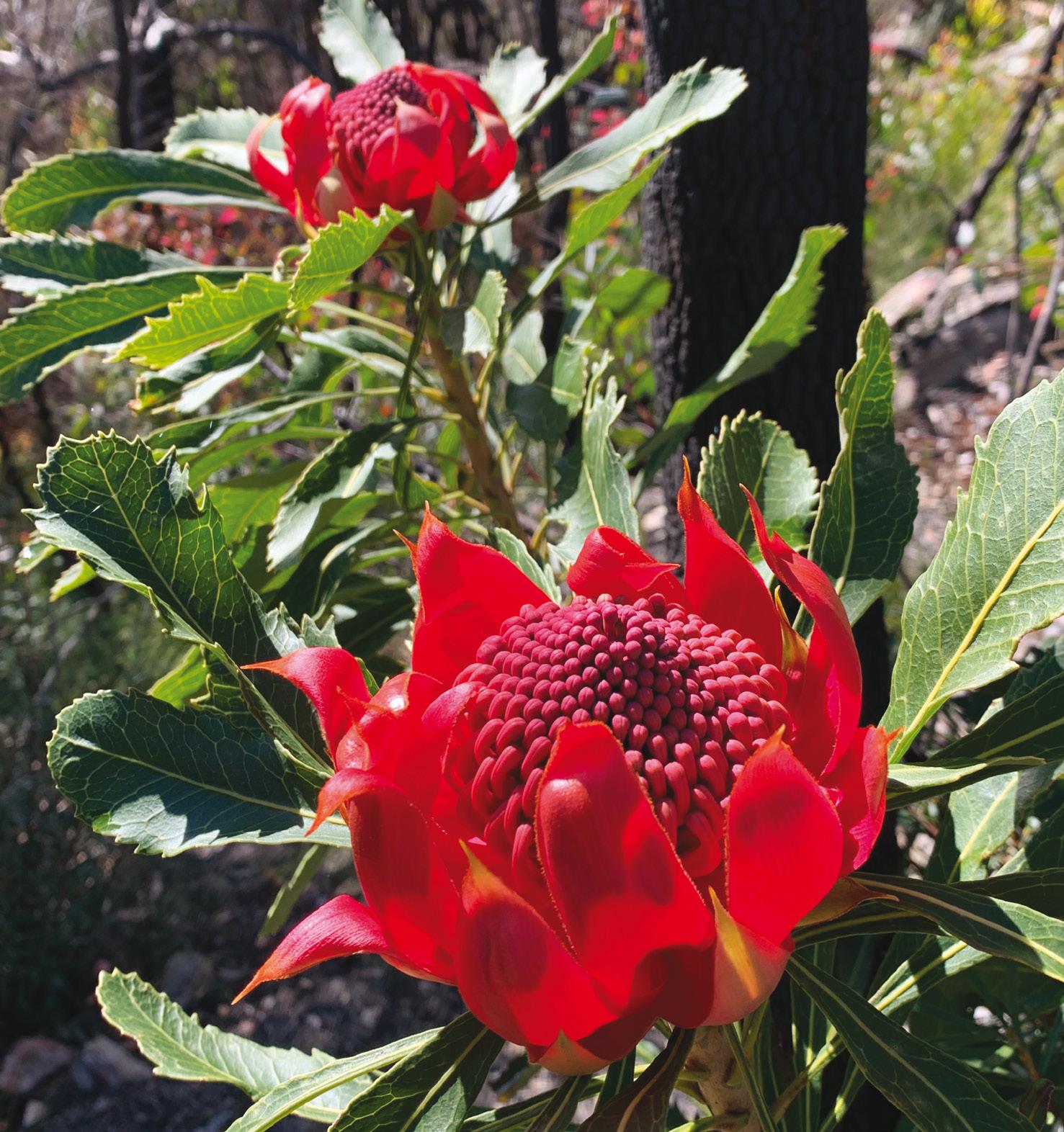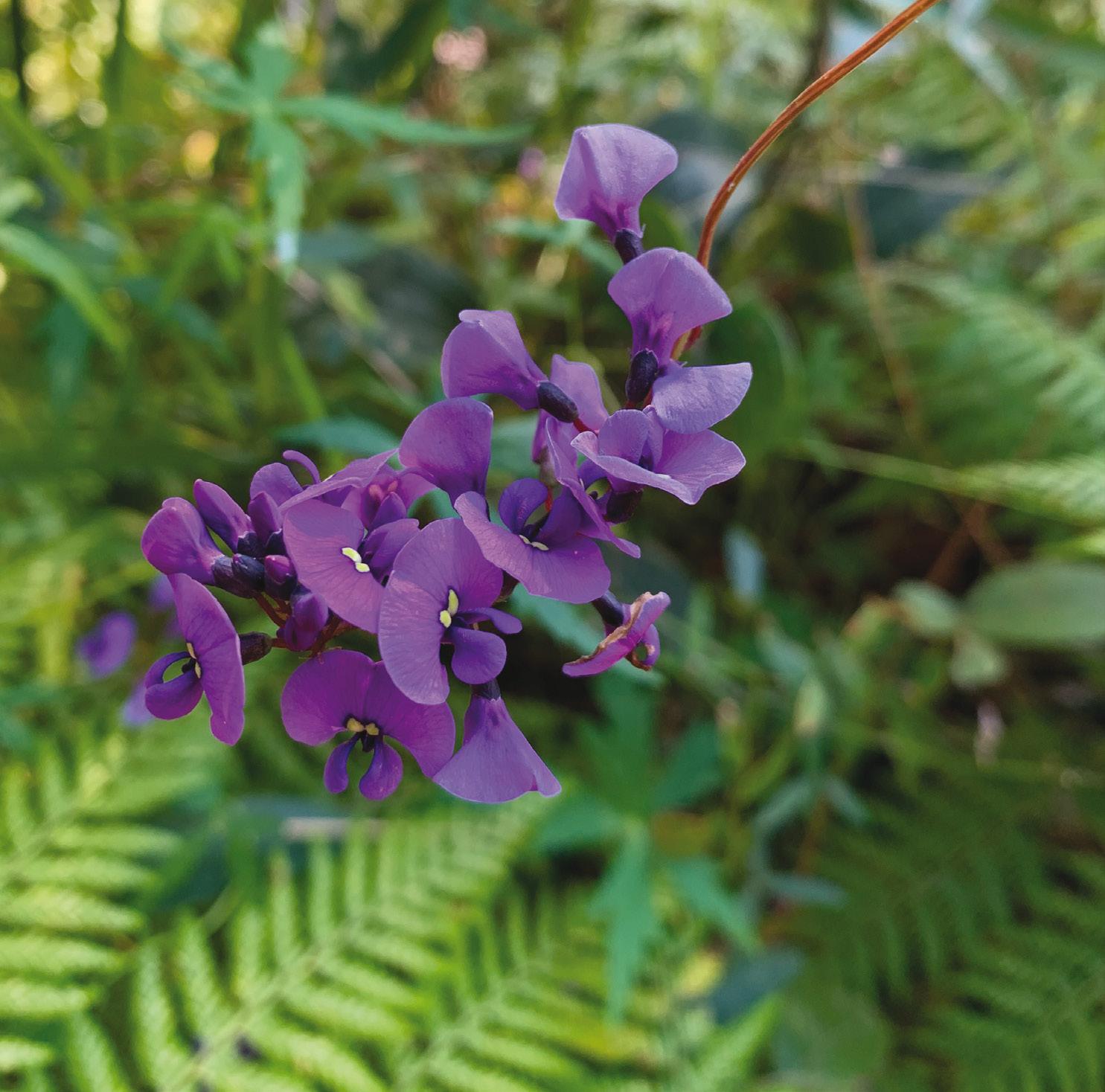
4 minute read
Recovery mode Fire ravaged
RESILIENT & FRAGILE
AREAS RAVAGED BY THE FIRES THAT SWEPT ACROSS NEW SOUTH WALES IN 2019/20 ARE SHOWING SIGNS OF RECOVERY, BUT AS DR BRETT SUMMERELL REPORTS, WEAKENED ECOSYSTEMS REMAIN HIGHLY VULNERABLE.
Advertisement
It is now two years on from the Black Summer fires that devastated vast areas of Australia – including our own Blue Mountains Botanic Garden – during the summer of 2019/20. The impact on plants was immense and highlighted how a changing climate could potentially transform our native ecosystems.
Since the fires swept through the Blue Mountains the region has been blessed with higher-than-average rainfall on a frequent basis. This has stimulated new growth, supported the germination of seed and the establishment of seedlings, and greatly aided recovery. Of course, this cannot be expected to continue long-term and for all these plant populations to fully recover they need to be able to continue to grow, flower and produce seed to replenish the seed bank in the soil and on plants. For some species this process is relatively quick – a few seasons – but for others it can take up to 10 years, or in the case of rainforest species, decades.
Over the past two years teams of scientists from around the country have been assessing and monitoring the impacts of the fires on a broad range of species – including birds, mammals, amphibians, invertebrates and of course plants. Our teams have been scouring affected landscapes, looking in particular for threatened species, to determine how they are recovering. They have also kept an eye out for plants that were stimulated by the fires to generate a flush of flowering and subsequent seed production, enabling us to fortify the seed bank at the Australian PlantBank.
Spring 2021 should have provided a great opportunity to assess how the recovery of plants was proceeding in what promised to be a bumper flowering season. Unfortunately, COVID-19 put a major roadblock in our way, but we were able to get special permissions to assess the recovery of some ecosystems, particularly in the Blue Mountains. One thing this process has highlighted – as has all our work to date – is that there is no single story to be written. Each type of ecosystem is responding differently, and in each location there are subtle differences depending on the aspect, soil and geology, and the intensity of the fire. There are instances in all types of ecosystems where the fires have been so intense that recovery is poor and it will take many more years for the bush to fully recover, if it can. Nevertheless, a few generalisations can be made.
A large number of the plant species in the heathland communities, for instance, are well adapted to recover from fire – many have the capability to produce epicormic shoots from surviving stems, or to produce lignotubers (swollen stem bases on or below ground level) that are establishing new shoots. Additionally, the soil seed bank has seen new seedlings popping up everywhere. Of course, it is now critical that conditions over the next few years (at least) support continued growth and, most importantly, flowering and seed production, so that the soil seed bank is replenished, providing capacity to recover from the next fire.
In the woodlands and forest, especially the wetter forests in parts of the Blue Mountains, the recovery in some locations is quite heartening, particularly where the fire was less intense. There is no doubt that a lot of the structure of these forests has been severely compromised, with trees losing limbs, partially collapsing, or falling over. But there are benefits from this through the creation of hollows and other habitat for birds, mammals and an array of other creatures. Where the fires were particularly intense there has been a complete loss of the canopy and this
Epicormic growth at Mount Banks, Blue Mountains National Park


is going to take some considerable time to recover – if it ever does.
One of the overriding perspectives that I took from these assessments was that the bush – at this point in time – is displaying a combination of resilience and great fragility.
Numerous species have certainly bounced back after the fires, with lots of epicormic growth, thousands (possibly millions) of new seedlings and a great flush of green growth. As we move through spring many species are flowering in great abundance, providing food resources for birds, mammals and invertebrates.
At the same time, my concerns about the fragility of the bush have grown partly from reading the latest report from the Intergovernmental Panel on Climate Change (Sixth Assessment), which highlights, among many other things, the likelihood of more frequent and extended drought conditions and bushfires. With so much of the recovery at a stage that could so easily be adversely affected by another extended drought or fires, it is all too easy to envisage a situation where so much of this recovery is wiped out in a figurative blink of the eye.
There is no doubt that we can expect future scenarios similar to what we experienced in 2019/20, and there is a continuing need to address the climate crisis globally and nationally. At the Australian Institute of Botanical Science our focus will be on ensuring that vegetation is restored sustainably, plants are protected against invasive disease, and insurance collections of threatened and at-risk species are in the Australian PlantBank seed bank.
However, we all have a role to play in reducing emissions, recycling and reusing, and in advocating corporations and governments to make positive changes that genuinely reduce humanity’s impact on the natural world.
Hardenbergia violacea at Ruined Castle walking track, Blue Mountains National Park
Waratahs in flower in the Blue Mountains National Park










